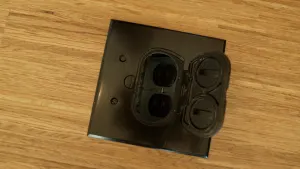The “Aging in Place” Concept is Not Just for the Elderly
Sponsored Content
As homeowners age, they have a tendency to remodel and retrofit their homes to better address physical changes that create a situation in which the house isn’t working for them anymore. While homeowners continue to adjust, tweak and otherwise make changes that add convenience and ability to their lives, there is another way to look at this concept of aging in place. It’s called Universal Design.
Through the years, families are faced with accommodating many people, from making it convenient for visitors to providing safe living accommodations in multi-generational families that include children and elderly, alike. Consider this: one in eight Americans of all ages has some type of disability and, by 2030; the U.S. will have more than 85 million people over the age of 65.
As a result, designers and builders are often challenged with long-term livability issues. According to the National Disability Authority, Universal Design establishes an environment that can be accessed, understood and used fully by all people regardless of their age, size, ability or disability. It is now considered a fundamental condition of good design.
What Does Universal Design Include?
There are two aspects of Universal Design. First, the removal of barriers, followed by the selection of products that make sense for everyone. They may have existing mobility and access problems or acknowledge that the possibilities may happen in the future. What Universal Design does, therefore, is to identify products that work across generations. The elements regarding access and mobility include:
- Multilevel homes
- Door handles and ease of opening/closing doors
- Cabinet and drawer knobs
- Door openings that can accommodate wheelchairs and walkers
- Wood/vinyl floors vs. carpeting
- The smart use of technology
- Walk-in showers vs. bathtubs
- Virtually anything that prevents access or causes a potentially dangerous situation
The “Design” Element of Universal Design
Universal Design addresses those challenges that are not based on urgent need or dramatic change. Instead, it targets progressive change, such as that caused by arthritis, difficulty bending and reaching low, balance issues, and difficulty pulling, lifting and gripping. Its goal is to provide convenience and satisfaction over decades.
Given that the concept spans multiple product types, one important example to address is the difficulty people may have when pulling, lifting and gripping.
Why Builders Should Care
The concept of Universal Design is appropriate for every family, and every home built, rather than targeting a limited segment of clients. It combines accessibility and usability for the majority and greatly expands on the range of clients that builders typically address. Finally, it provides differentiation for you and your company—walking clients through how this home will age with them over the years.
Builders with Universal Design clients should have plans reviewed by a Certified Aging-in-Place Specialist (CAPS) through the National Association of Home Builders (NAHB) program. NAHB offers education and resources to builders, assisting them in competing in this rapidly growing design segment.
Sugatsune Systems’ Role in Ageing in Place
Sugatsune is ISO 9001 certified and has a rich tradition of manufacturing and distributing quality hardware adhering to Universal Design. The company’s award-winning LIN-X1000 Lateral Door Opening System provides smooth movement with a soft-close that supports large doors weighing up to 200 lbs., without making them feel at all heavy.

In comparison, the LIN-X450 lateral-door system specifically provides full cabinet access. Given that these doors do not swing open, the lateral movement requires only 9-5/16” clearance regardless of the width of the door panel. The minimal clearance necessary, makes these door systems ideal for wheelchair access or walkers. The operation of the system allows for easy, smooth opening and soft closing, preventing fingers from being pinched.
Sugatsune has a long history of developing products with Universal Design in mind. Providing furniture fittings since 1930, the company has experienced the many changes in people’s lifestyles, recognizing the need for lifelong solutions that incorporate safety, modern design, easy motion and versatility. Pair a drawer or cabinet door with one of many Sugatsune push-to-open catches and open them easily with just an elbow. Finger dexterity limitations, or even full hands presents no challenges to their operation. Sugatsune’s pocket and sliding-door solutions such as the FD-80 pocket-door solution can easily be adjusted should changes become necessary. The system offers a 2-way soft open and close feature and provides a constantly smooth function that allows the use of the doors with minimal effort. The FD-80 eliminates the headaches inherent in having to break open a completed pocket, while providing easy access and adhering to Universal Design requirements.
Sugatsune addresses the livability challenges experienced by designers and builders. By adopting a real understanding of how Universal Design provides an environment that is easily accessed, understood and used by all, regardless of age, size, ability or disability. And, as the 85 million that will be 65 and older by 2030 and wish to remain in their homes, Universal Design will ensure an easier environment to do so. By incorporating Sugatsune hinge and lid support systems and push-to-open catches and latches, access issues that are all too common will already be modified, delivering a more stress-free and enjoyable home.

 Share on facebook
Share on facebook Tweet
Tweet Email
Email Share on Linkedin
Share on Linkedin

















